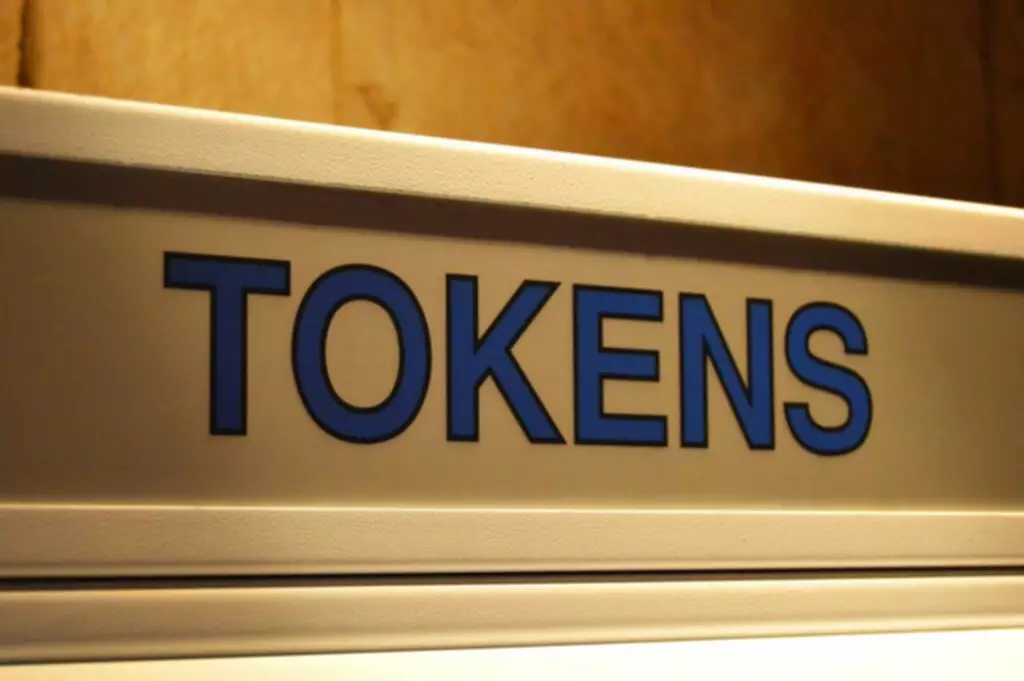Содержание
This article provides a definitive guide on decentralized crypto exchanges and assists in aiding users’ knowledge and overall understanding of DEXs. ” are essential for drawing out a basic overview of the possible differences between them. Following the definition and overview of centralized exchanges, you must be eager to find out about decentralized exchanges. As the name implies, decentralized exchanges are basically the counterparts of centralized exchanges with a different structure. You can clearly guess that the decentralized exchanges are free from the control of any single entity, serving as intermediaries. On the contrary, decentralized exchanges are actually smart contracts tailored for offering peer-to-peer transactions.
Pre-Merge Ether Exchange Inflows of Over $1B Trigger Fears of Price Drop – Yahoo Finance
Pre-Merge Ether Exchange Inflows of Over $1B Trigger Fears of Price Drop.
Posted: Wed, 14 Sep 2022 07:00:00 GMT [source]
Features like margin trades, limit orders, futures, options, etc., are typically unavailable. NFTs are offering creators the ability to establish a platform around the projects important to them and to share their creativity with new people. NFTs are transforming how businesses do marketing, create communities, and how the public perceives artists. DEXs will continually enjoy a large user base willing to use their features by emphasizing freedom and privacy. And due to the ongoing regulatory uncertainty surrounding CEXs, more users will naturally gravitate towards DEXs. As CEXs are large organizations with employees and several business expenses, including equipment and primarily security of assets, CEXs operating expenses are often costly.
Trading On A Cex Vs Dex Whats The Difference And What Are The Risks?
There are ongoing rug pulls and exit scams with decentralized crypto exchanges due to non-existent KYC and/or AML regulatory standards. KYC is mandatory on the biggest centralized crypto exchanges, as well as proof of address and verification. With decentralized crypto exchanges, such procedures aren’t required. CEX vs DEX crypto comparisons draws the limelight towards liquidity. You might have assumed that DEXs are the winners when it comes to liquidity, especially owing to the use of liquidity pools in AMM DEXs.
However, you should keep in mind that in such exchanges, the lack of moderating third-party shifts all responsibility for errors and security to the users themselves. But this is just a facade behind which powerful logic is hidden. After all, a crypto exchange must provide a variety of operations from creating accounts, checking balances to transferring funds between wallets and withdrawing currency. Also, we are interested in the high speed of transactions and security as one of the crucial factors of user trust. Before we list our favorite DEXs, not all decentralized exchanges are the same. Some platforms prefer order book models, while other exchanges use liquidity protocols to manage trading activity.
In addition, centralized exchanges also provide the assurance of better liquidity with more users involved on centralized crypto exchange platforms. DEX vs CEX difference in the case of trading options offered on the crypto exchanges. Centralized crypto exchanges provide a wide range of trading options for users, including crypto lending and borrowing, airdrops, futures trading, options, spot trading, and leverages.
The Downside Of Decentralized Exchanges
At this stage of the development process, specialists implement various security features to make the platform reliable both for you and for future users. One of the most important security measures is an encrypted database and password-protected user access. DeFi and NFTs are the two frontiers of the blockchain space, and DEXs are strong propellers. DEXs allows users to access the world of smart contracts and DApps that provide financial services, including lending and savings products, as well as NFT projects. Using a decentralized exchange typically only requires you to connect your wallet and sign a transaction. A decentralized crypto exchange facilitates crypto trading on a peer-to-peer level without the need for an intermediary.
Three promising options are third-party market makers, cross-exchange market making, and liquidity mining. Wallets allow you to store and transfer your digital money. Usually, when registering, a user immediately receives a wallet. The e-wallets for digital currencies that you provide on your platform must enable secure transactions for withdrawing your virtual money and converting it to fiat currency.
Key Features Of A Crypto Exchange Platform
Based on your requirements and market research, a team of designers creates an effective user interface for your platform. Detailed visualization will allow you to prevent possible UX-related issues and make you see the logic of user interaction with the exchange. This method of maintaining liquidity is most related to cryptocurrency as it relies on decentralized community support. Its essence is that liquidity providers are rewarded for facilitating trade.
While some DEXs offer some of these trading options, most of the work on decentralized exchanges revolves around crypto lending and borrowing, and speculations. At the same time, decentralized exchanges have also come up with some unique issues of their own. Therefore, you need a detailed comparison between CEXs and DEXs on the grounds of specific factors pertaining to their usability. Here are some of the notable points of difference in a comparison between centralized and decentralized crypto exchanges. A big reason decentralized crypto exchanges have become so popular is their lack of KYC requirements and non-custodial features. This is possible because DEXs allow users to execute transactions without the presence of third parties.
Trading Engine
At the same time, this operator is a market maker on one or several other exchanges. A user creates exchange requests by setting the value and volume of a cryptocurrency. Let’s dive into the pros and cons of each exchange type to learn more about what each trading platform has to offer and how the two differ. In this guide, we explore the differences between the two and what risks you need to be aware of when trading on each of these exchanges. A specialized interest rate focused on allowing users to earn passive income off stored tokens.
Don’t forget to let users choose which notifications they want to enable. Other essential features of good exchange are order book and transaction history. Exchanges group the actual buy and sell orders separately, and the formed list of open orders is called an order book. When an order finds the offer that matches its conditions, centralized cryptocurrency an exchange automatically concludes a deal between users, and the executed orders disappear from the list. Decentralized trading venues are built using smart contracts, which creates a certain degree of code risk. That means that if a trading platform’s code has bugs or vulnerabilities, it can be exploited and funds are lost.
Push notifications will help you maintain communication with your users. Push notifications and alerts are convenient both for you and for traders because they will not miss important events. With the help of alerts, you can notify users about promotions, news, and special offers. Traders, for example, can see notifications about price changes, trend changes, coin listing alerts, track exchange listings, and the like.
Marketvector Indexes Gmbh
While CEXs provide easy trading, high liquidity, etc., their wallets are custodial, meaning that they hold authority over your crypto. Going by the famous phrase “not your keys, not your coin,” it is safe to say CEX wallets create a security https://xcritical.com/ risk for traders and investors. Binance, for example, regularly records more than $30B in daily trading volumes. For newbies, these active platforms essentially guarantee that their assets can be exchanged seamlessly at any time.
Other exchanges use liquidity protocols instead of order books to produce price conclusions. The majority of these platforms are P2P and will execute trades within wallets right away in a process called crypto swapping. Our earlier article explains how the process of crypto swapping works and the best ways to get involved. After all the tests and improvements, your crypto exchange platform is ready to go. There is a lot of work ahead to promote and support, but with a high-quality software product, these processes will be much easier. Security is a key property of any platform that deals with money.
Moreover, if you intend to work with fiat money, you will most likely have to meet state and government standards. It all depends on the state in which you are going to register your exchange. Typically cryptocurrency exchanges use a type of chart called candlestick charts. Each candlestick in it shows rate change for the selected period, where green means an increase, and red means a fall.
At the same time, users expect the members of this network to be trusted and with good intentions. Verification is important to ensure the transparency of transactions and to minimize the possibility of fraud. Also, it confirms that cryptocurrency exchange complies with international standards. Enable anti-bot verification and two-factor authentication , ask users to verify their identity with their ID and photo.
- DeFi and NFTs are the two frontiers of the blockchain space, and DEXs are strong propellers.
- Decentralized exchanges provide a neat system for crypto trading with the facility of liquidity pools.
- For example, Binance only charges 0.1% on every trade made, as well as small fees for currency withdrawals.
- In addition, centralized exchanges also provide the assurance of better liquidity with more users involved on centralized crypto exchange platforms.
- Low trading volumes make decentralized crypto exchanges very illiquid.
- One endearing quality of most CEXs is the user interface.
- DEX platforms employ different implementations to manage their financial instruments.
Of course, people are less willing to provide personal data for verification. It is your job to mitigate their concerns and show that you are not going to share information with third parties. Good UX/UI design can help you make the registration process consistent and user-friendly. DEXs are non-custodial, which means only you have control over your funds.
They allow users to instantly exchange one cryptocurrency for another. All you have to do is enter a trade order and it will be immediately executed. This is possible because instant exchanges provide access to the trading pairs of many different exchanges on one central service.
Centralized exchanges manage order books, which record all buy and sell orders. The weak point of this type is that coins are stored in the services themselves, which increases the likelihood of losing your funds due to hacker attacks. Therefore, centralized exchanges work hard to ensure the proper level of security. Crypto exchanges are online platforms that allow you to buy, sell, and transfer cryptocurrencies. They are distinguished by high transaction speed and lower fees, which makes them attractive for both small and large investors.
Just like you can purchase and sell assets such as shares and derivatives on stock exchanges, crypto exchanges allow you to purchase and sell blockchain-based tokens and coins. Centralized exchanges bring a wide array of benefits, including the ways in which they are suitable for crypto beginners. The user-friendly UIs and support of the centralized company behind CEXs offer the ease of recovering your crypto assets.
Liquidity Management
For example, Binance only charges 0.1% on every trade made, as well as small fees for currency withdrawals. 1inch works with wallets outside the 1inch wallet, including MetaMask, MyEthereum wallet, and Binance Smart Wallet. DEX platforms employ different implementations to manage their financial instruments. Multilingual – the platform is available in several languages, including English, Russian, and Chinese.
The following discussion presents a clear outline of the differences between centralized exchanges and decentralized exchanges in the crypto world. Having an idea of what cryptocurrencies you want to be listed on your exchange, the development team adds the necessary coins to the platform. After that, users will have the opportunity to buy and sell different types of cryptocurrencies. The next feature that will help you attract advanced traders to your exchange is the internal analytical system. Analytical tools allow traders to get additional information about market trends and develop their game strategies.
What Are Decentralized Crypto Exchanges?
The IdeaSoft team has extensive experience in blockchain development. Over the past 5 years, we have developed dozens of blockchain-based solutions, including crypto exchange platforms. The user’s path to your exchange begins with authorization, so you need to provide a simple onboarding process.
Liquidity
The people who invest their assets in the liquidity pool receive governance tokens which also ensure distributed governance in the exchange. An exchange is a complex platform and you need to think over its functionality well to build a good software product. Whether you want to provide trading of one cryptocurrency or many, you need to start with the core features that your platform should have. The structure of a crypto exchange usually consists of the following basic elements.
If you want to create a successful crypto exchange, you need to pay special attention to the security of data storage and transactions. There are more and more methods of hacker attacks, attackers can either attack your server or hack the admin panel, or attack specific users. When developing a crypto exchange, you should make sure that your platform meets some of the requirements and recommendations of Fintech regulation. This includes both regulatory compliance and security standards. So this is what you should pay special attention to when creating an exchange platform. Such exchanges have a centralized operator who is responsible for security, updates, and functionality.



